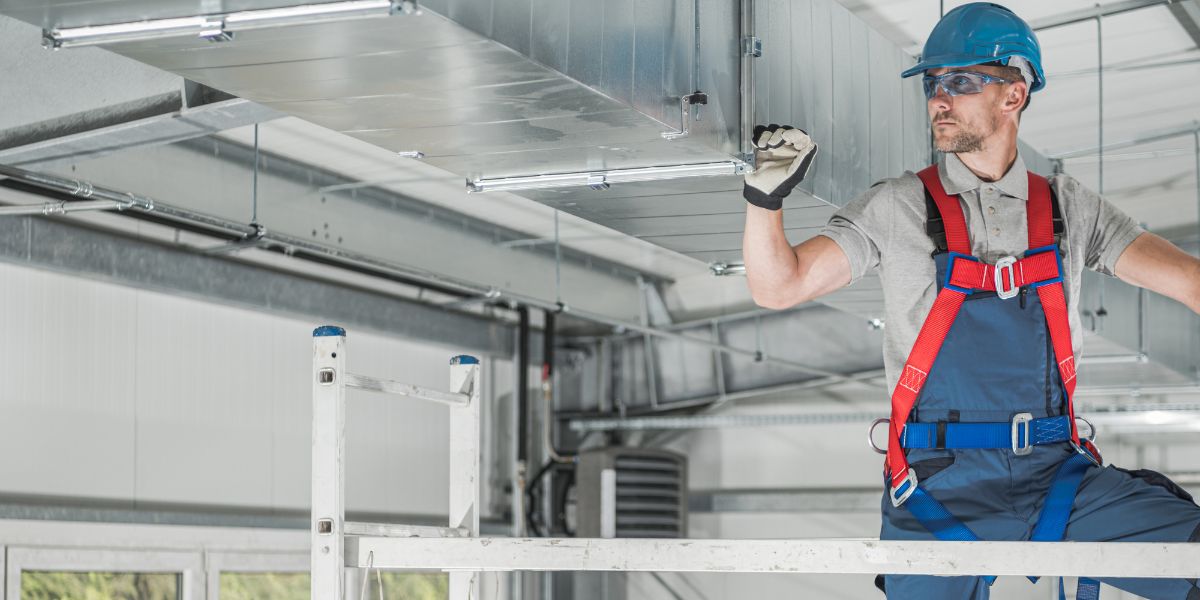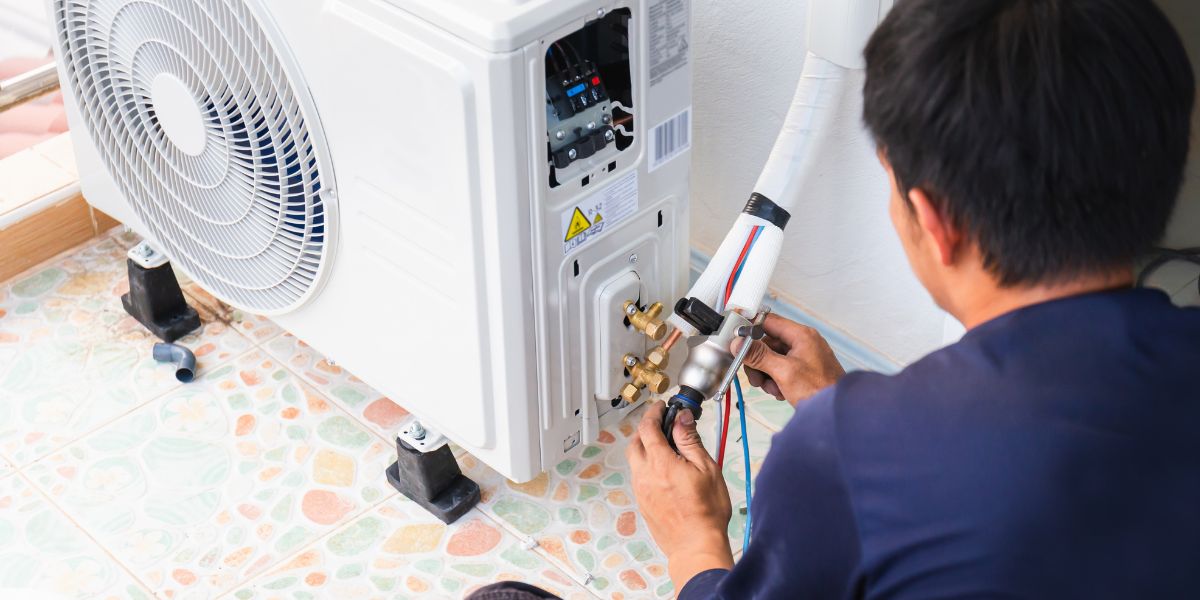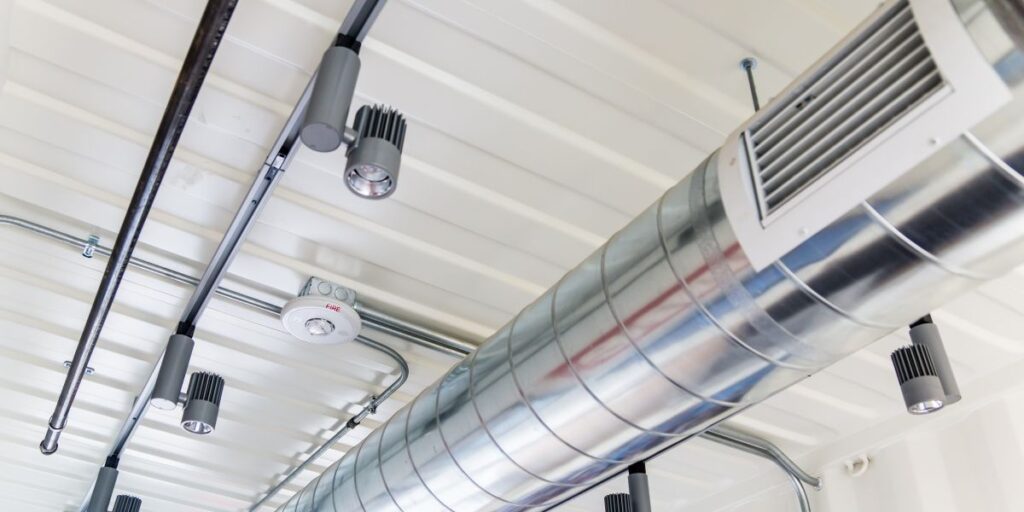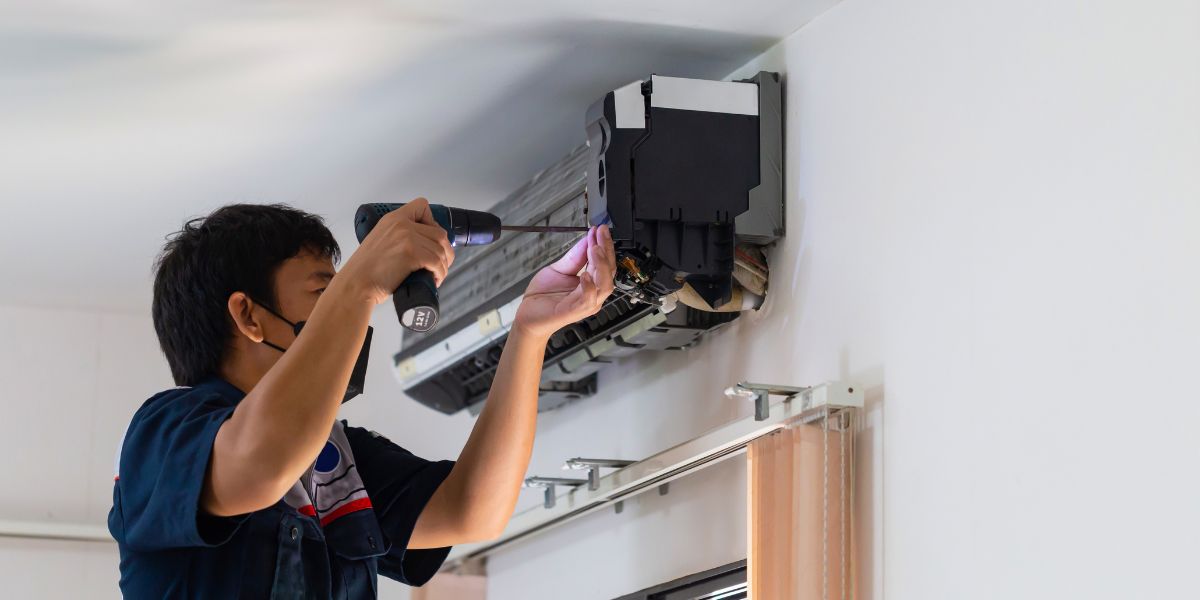If you own a home, chances are you have an HVAC system that helps keep you comfortable year-round. But have you ever considered the role of ductwork in your HVAC system? Ductwork is a critical component of any heating or cooling system, yet it often goes unnoticed until something goes wrong.
In this article, we’ll explore the basics of ductwork and how it works in your HVAC system. We’ll also discuss common signs of ductwork problems and offer tips for maintaining and upgrading your ductwork to ensure optimal performance from your HVAC system. Whether you’re a homeowner looking to learn more about how your HVAC system works or an HVAC professional seeking to educate customers, this guide will provide valuable insights into the importance of proper ductwork in any heating or cooling setup.
Understanding the Basics of Ductwork
Understanding the basics of ductwork is like learning about the veins and arteries that transport air throughout your home. Ductwork materials, such as sheet metal, fiberglass, or flexible plastic, are crucial in ensuring that your HVAC system operates efficiently. Sizing considerations are also important since undersized or oversized ducts can cause issues with airflow and energy consumption. Understanding how to properly install and maintain ductwork to prevent leaks or blockages that can negatively impact indoor air quality and overall comfort is essential. Now let’s explore how ductwork works in your HVAC system.
How Ductwork Works in Your HVAC System
When it comes to the ductwork in your HVAC system, there are three key points you should understand: airflow and pressure, balancing and zoning, and energy efficiency. Understanding how these factors work together is essential for ensuring that your HVAC system runs smoothly and efficiently. With proper attention to each of these areas, you can keep your home comfortable while minimizing energy waste and maximizing cost savings.
Airflow and Pressure
If you’re not careful about maintaining the airflow and pressure in your ducts, you might end up with an inefficient heating or cooling system. Airflow management is crucial to ensure that the air circulates throughout your space properly, allowing for consistent temperatures and preventing hot or cold spots. Pressure regulation also plays a vital role as too much pressure can cause leaks or damage to your ductwork. It’s essential to have a professional inspect and clean your ducts regularly to keep them functioning correctly. In the next section, we’ll discuss balancing and zoning techniques that can further enhance the efficiency of your HVAC system.
Balancing and Zoning
To optimize the performance of your heating and cooling, you’ll need to balance and zone your airflow. Balancing techniques involve adjusting the dampers in your ductwork to ensure that each room receives an equal amount of air flow, which helps prevent hot or cold spots throughout your home. Zoning benefits go beyond just balancing airflow; it allows you to control the temperature in different areas of your home separately, giving you greater comfort and energy efficiency. By dividing your home into zones using motorized dampers and separate thermostats, you can turn off heating or cooling in unused areas while maintaining a comfortable temperature where you spend most of your time. This not only saves energy but also reduces wear and tear on your HVAC system. With proper balancing and zoning techniques, you can enjoy better indoor air quality, lower utility bills, and increased overall comfort in your home. Speaking of energy efficiency…
Energy Efficiency
You can increase the efficiency of your home’s heating and cooling by implementing energy-saving techniques such as sealing air leaks, adding insulation, and upgrading to energy-efficient appliances. Ductwork design also plays a crucial role in improving energy efficiency. Properly designed ductwork ensures that conditioned air is distributed evenly throughout your home, reducing the workload on your HVAC system. Additionally, poorly designed or leaky ducts can cause up to 30% of conditioned air to escape before it reaches its intended destination. This not only wastes energy but also increases your utility bills. By addressing these issues, you can save money while enjoying a more comfortable living environment. Speaking of which, signs of ductwork problems include uneven temperatures throughout your home and increased dust accumulation.
Signs of Ductwork Problems
Spotting signs of problems with your home’s air ducts can help you avoid costly repairs and ensure that your HVAC system is working efficiently. Common signs of ductwork problems include excessive dust or debris around the vents, uneven heating or cooling throughout your home, strange noises coming from the ducts, and a sudden increase in energy bills. These issues can be caused by a variety of factors such as leaks in the ductwork insulation, poor installation or design, or damage to the ductwork itself. If you suspect that there may be an issue with your ductwork, it’s important to have it inspected by a professional who can diagnose and repair any problems using advanced ductwork repair techniques. By addressing these issues early on, you can prevent further damage to your HVAC system and improve its overall energy efficiency. In the next section about ‘ductwork maintenance and cleaning’, we will discuss steps you can take to keep your air ducts in good condition.

Ductwork Maintenance and Cleaning
Now that you’re aware of the signs of ductwork problems, it’s important to know how to maintain and clean your ductwork. Regular maintenance can prolong the lifespan of your ductwork, which can range from 10-25 years depending on the material type. Ductwork made from metal or fiberglass may last longer than those made from flex duct or plastic. It’s recommended to have a professional HVAC technician inspect and clean your ducts every few years to ensure they are functioning properly and not harboring any mold or dust buildup. Neglecting proper maintenance can lead to decreased indoor air quality and higher energy bills due to inefficient airflow. If you’re ready for an upgrade, keep reading about how upgrading your ductwork can improve your overall HVAC system performance.
Upgrading Your Ductwork
Upgrading your ducts can significantly enhance the efficiency and effectiveness of your home’s ventilation, allowing for cleaner air and potentially lower energy costs. When considering an upgrade, cost considerations are important to keep in mind. While a professional installation may be more expensive upfront, it can save you money in the long run by ensuring proper sizing and sealing of the ductwork. However, if you’re handy with DIY projects, there are options available for upgrading your ductwork yourself. Just make sure to do thorough research and follow all safety guidelines before attempting any work on your HVAC system. With proper upgrades, you can improve the overall performance of your HVAC system while also reducing energy costs and improving indoor air quality. Now let’s move on to some common ductwork FAQs.
Common Ductwork FAQs
In this section, we’ll cover some frequently asked questions about ducts and how they can impact the performance and energy efficiency of your home. Did you know that leaky ducts can waste up to 30% of heated or cooled air? That’s like throwing money out the window! To make sure your ductwork is working efficiently, it’s important to seal any leaks and ensure proper sizing. Here are some common questions people have about their ductwork:
- How do I know if my ducts need sealing?
- Look for visible tears or holes in the ductwork
- Check for inconsistent temperatures throughout your home
- Listen for unusual noises coming from the HVAC system
- Why is proper sizing important?
- Oversized or undersized ducts can lead to inefficient airflow
- Properly sized ducts ensure consistent temperatures throughout your home
By taking care of these two aspects of your ductwork, you can improve the overall efficiency of your HVAC system. In conclusion, having well-sealed and properly sized ductwork is crucial for maintaining a comfortable and energy-efficient home.

Conclusion: The Importance of Proper Ductwork in Your HVAC System
You can’t underestimate the impact of having well-sealed and appropriately sized ducts on the efficiency and comfort of your home’s heating and cooling. The importance of maintenance cannot be stressed enough, as leaks or blockages in your ductwork can lead to decreased airflow, increased energy bills, and even health hazards from poor indoor air quality. But investing in cost-effective solutions such as regular cleaning or upgrades to more efficient materials can not only improve your HVAC system’s performance but also save you money in the long run. Properly functioning ductwork is essential for a comfortable and healthy home environment, so don’t overlook its importance in maintaining your HVAC system.
Conclusion
Congratulations! You now have a better understanding of the role that ductwork plays in your HVAC system. As you’ve learned, ductwork is responsible for distributing heated or cooled air throughout your home, making it an essential component of your overall comfort.
Just like how a straw helps you enjoy a refreshing drink, ductwork helps deliver the perfect temperature to every room in your house. However, if not properly maintained or upgraded when necessary, ductwork can also be the source of problems such as poor indoor air quality and energy inefficiency.
By keeping an eye out for signs of ductwork issues and scheduling regular maintenance and cleaning, you can ensure that your HVAC system is running smoothly and efficiently. And if you’re considering upgrading your ductwork, don’t hesitate to consult with a professional who can help guide you through the process.
Remember: proper ductwork is key to achieving optimal comfort in your home. So take care of it just like you would any other important component of your living space.







